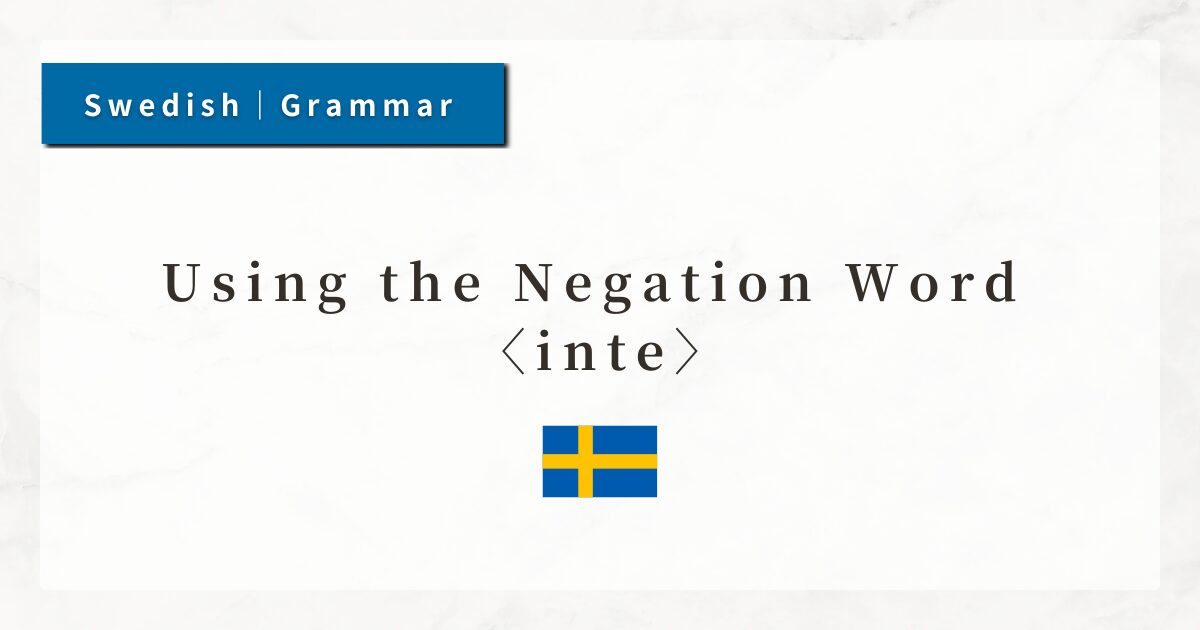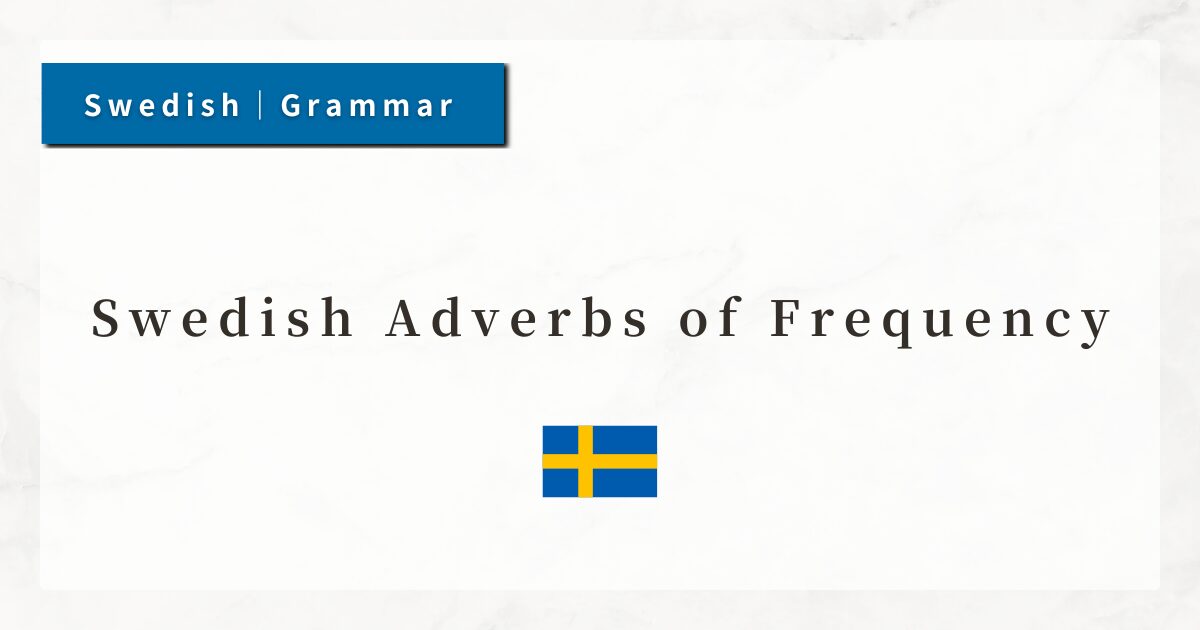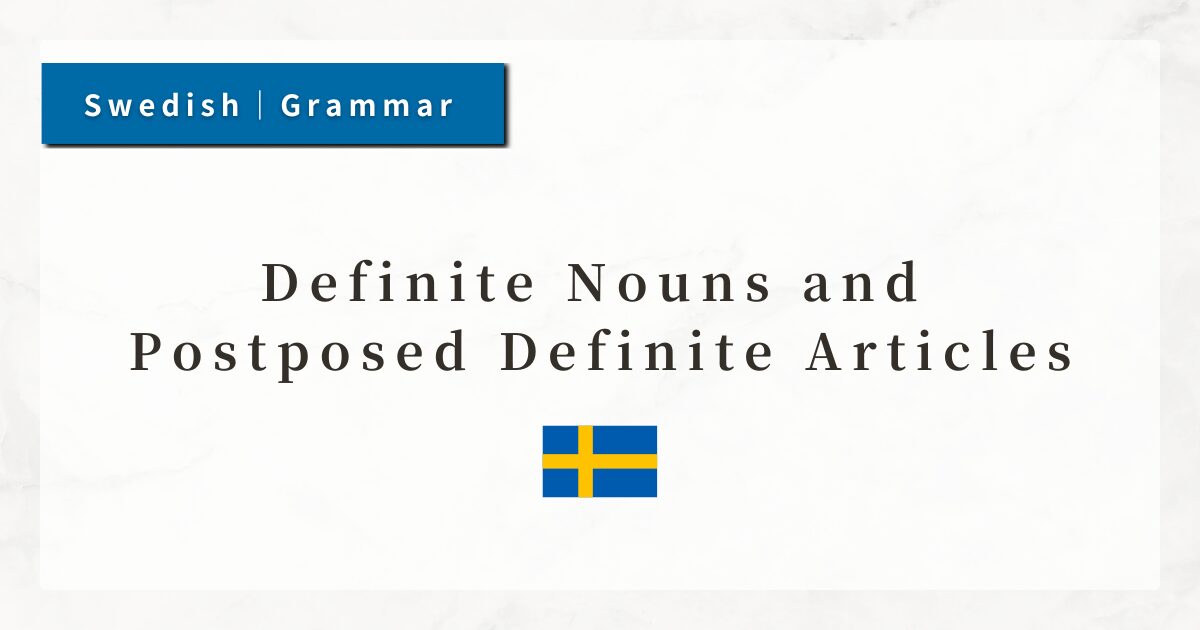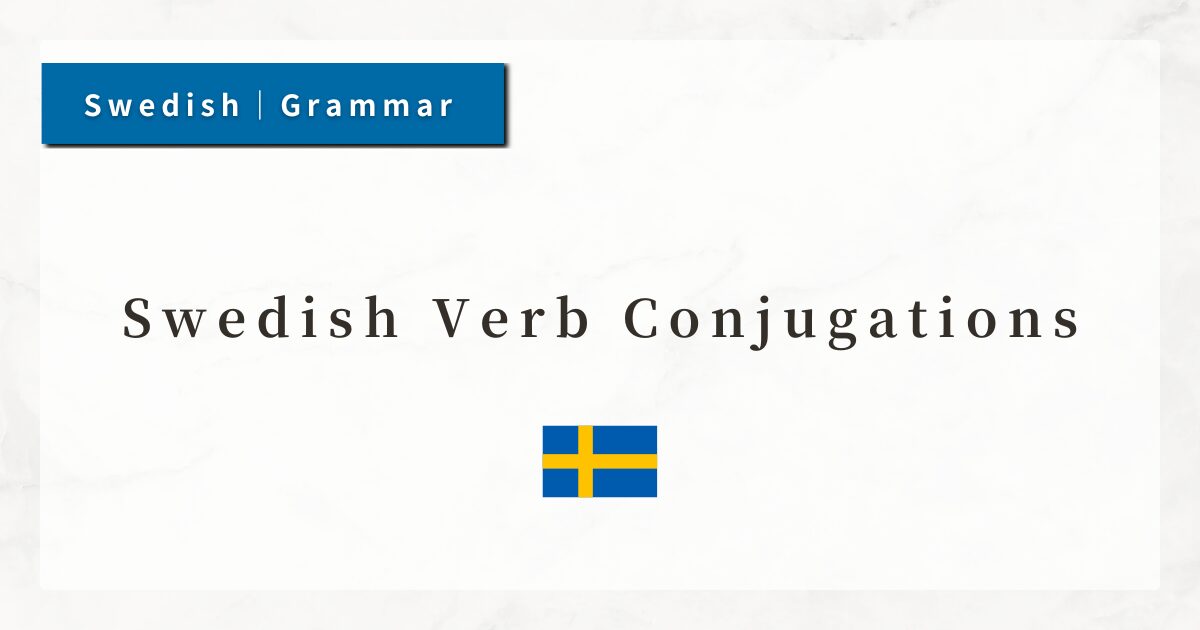#27 Irregular Verbs in the Swedish Past Tense|Conjugation Tables and Rules

One of the unavoidable challenges in learning Swedish is the existence of irregular verbs. Among them, many verbs that frequently appear in everyday conversation and writing have past tense forms that are not immediately predictable.
For example, the past tense of är (to be) is var, and the past tense of ha (to have) is hade. The connection to their infinitive forms is not always intuitive.
In this lesson, I will focus on some of the most common irregular verbs—such as vara, ha, and gå — and explain their past tense forms, meanings, and usage.
1. How the Past Tense is Formed: Regular Verbs
Before looking at irregular verbs, let us review how the past tense is generally formed in Swedish.
Regular verbs (those that follow a consistent pattern of conjugation) are divided into several groups depending on their stem and ending. In many cases, their past tense is formed as follows:
| Infinitive | Meaning | Past tense | Note |
|---|---|---|---|
| tala | to speak | talade | Regular verbs ending in -a (1st conjugation) |
| köra | to drive | körde | Add -de to stems ending in -r (2nd conjugation) |
| läsa | to read | läste | Add -te before voiceless sounds (3rd conjugation) |
In most cases, Swedish verbs form the past tense by adding endings such as -de or -te to the stem (the infinitive minus -a).
2. What Are Irregular Verbs?
Swedish verbs change forms according to tense—present, past, perfect, and so on. When these changes occur in an unpredictable way, we call them irregular verbs.
Their stems may undergo vowel changes, or the forms may look completely different.
- gå (to go) → gick (went)
- ha (to have) → hade (had)
Because the past tense of irregular verbs does not follow a pattern, they must be memorized individually.
3. Basic Irregular Verbs in the Past Tense
Let us now review some of the most essential irregular verbs that every learner should master first.
3-1. vara (to be) → past tense: var
The past tense of är (to be) is var (was/were). It plays a role similar to the English verb to be.
- Jag är trött. (I am tired.)
→ Jag var trött. (I was tired.) - Hon är hemma. (She is at home.)
→ Hon var hemma. (She was at home.)
Just like är, the past tense form var is the same regardless of the subject.
3-2. ha (to have) → past tense: hade
The verb ha means “to have,” and its past tense form is hade.
- Jag har en bok. (I have a book.)
→ Jag hade en bok. (I had a book.) - Vi har tid. (We have time.)
→ Vi hade tid. (We had time.)
In addition to indicating possession, ha is also used more broadly, meaning “to experience” or “to undergo,” similar to English “have”.
3-3. gå (to go) → past tense: gick
The verb gå means “to go,” and its past tense form is gick.
- Jag går till jobbet varje dag. (I go to work every day.)
→ Jag gick till jobbet igår. (I went to work yesterday.) - De går till skolan. (They go to school.)
→ De gick till skolan. (They went to school.)
Because gick changes completely in form, beginners may not immediately recognize its connection to gå.
3-4. Other Common Irregular Verbs in the Past Tense
Here is a list of other frequently used irregular verbs:
| Infinitive | Meaning | Past tense | Example sentence |
|---|---|---|---|
| komma | to come | kom | Han kom hem sent. (He came home late.) |
| göra | to do, to make | gjorde | Vad gjorde du igår? (What did you do yesterday?) |
| säga | to say | sa / sade | Hon sa inget. (She said nothing.) |
| ta | to take | tog | Vi tog en paus. (We took a break.) |
| få | to get, to receive | fick | Jag fick ett mejl. (I received an email.) |
4. Summary
- Irregular verbs change significantly in the past tense and occur frequently in both speech and writing.
- Key verbs to memorize first include: vara → var, ha → hade, and gå → gick.
- Since irregular verbs do not follow set patterns, the best way to learn them is by studying them one by one together with example sentences.




